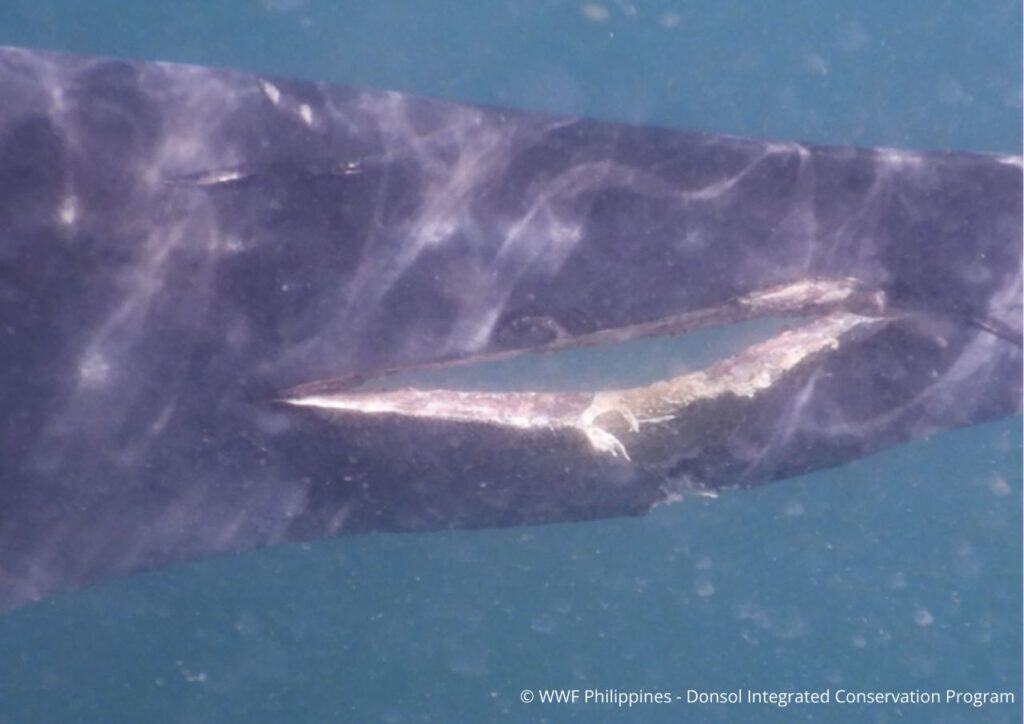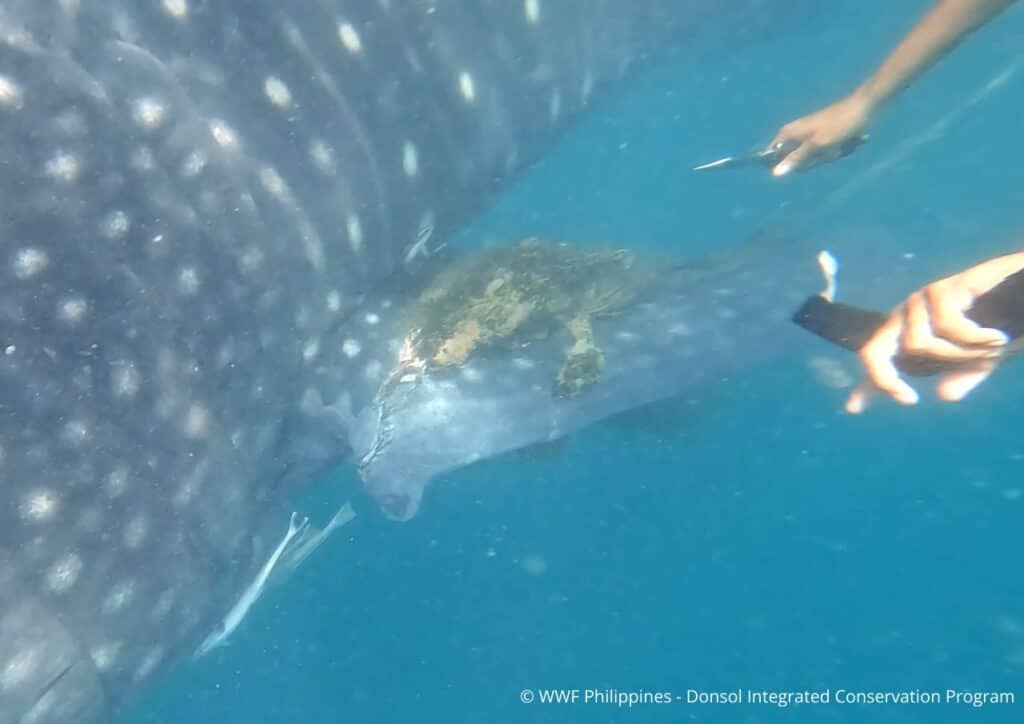The coastal waters of Donsol continue to be a haven for whale sharks, locally known as Butanding, attracting both local and foreign tourists—especially during the summer season—while reinforcing ongoing conservation efforts.
In the first quarter of this year, a rise in Butanding sightings was documented by WWF-Philippines’ Donsol Integrated Conservation Program. A total of 30 individual whale sharks have been recorded from the end of February to April—18 resights and 12 new individuals making their first documented appearance in Donsol.
WWF identifies individual whale sharks using a non-invasive photo identification method that relies on the unique spot patterns on each shark’s body. These photos are matched with a database of previously identified whale sharks. A match indicates a resight—a returning whale shark—while no match signifies a newly discovered individual in the area.
Giants’ bruises, gentle treatment
But alongside the excitement of these sightings lies a more sobering reality: these gentle giants continue to suffer from human activities such as waste disposal and, though unintentional, encounters with fishing boats.
According to Emjay Mirasol, Whale Shark Conservation Coordinator, injured whale sharks have been consistently documented, often due to entanglement in fishing nets and ropes or being struck by boat propellers—resulting in cuts and scratches, especially on their tails, pectoral, and dorsal fins. Alarmingly, some whale sharks have been found with amputated fins.
Mirasol explained that, as wild animals, whale sharks should not be touched unless absolutely necessary during rescue situations.
“They’re not supposed to be touched unless necessary. So if they have cuts, we can’t really do anything about it. But if we encounter a shark tangled in a net, we try to rescue it by cutting the net,” Mirasol said, noting the challenges of rescuing whale sharks due to their deep-diving behavior and the limitations of free diving.
In response, local offices in Donsol continue to prioritize conservation through community awareness and the enforcement of strict interaction guidelines for tourists, locals, and fishermen alike—helping protect this vibrant symbol of Donsol’s marine biodiversity.
There is also a strong emphasis on responsible waste disposal, particularly regarding plastic use, as microplastics can be ingested by whale sharks. In line with this, regular coastal clean-ups are conducted to safeguard not only the whale sharks but the broader marine ecosystem.
“We don’t feed them, we don’t touch them—we can only watch and swim with them,” Mirasol emphasized.


Tourists’ coast
On the tourism front, Donsol continues to position itself as one of the top destinations in the Bicol Region, according to Bobby Gigantone, chief of the Sorsogon Provincial Tourism, Culture and Arts Office.
“Our target this year is to double last year’s number of foreign visitors,” Gigantone noted. “We had 5,899 last year, and we’re already past 5,000 this season. We’re on track to becoming the most visited destination in the region by foreign tourists.”
Photos: WWF Donsol
